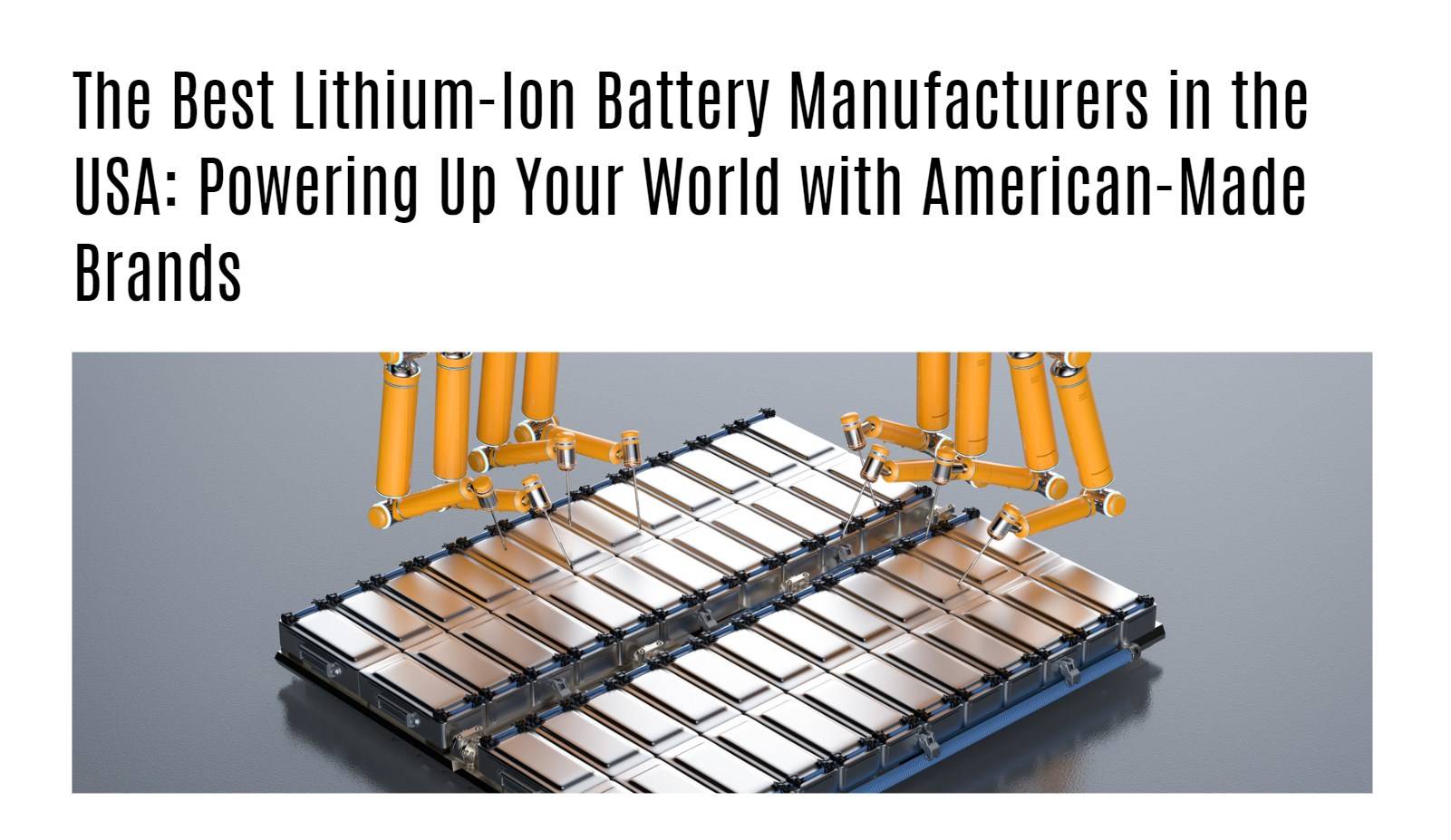The United States is home to pioneering lithium-ion battery manufacturers such as Tesla/Panasonic (Gigafactory Nevada), QuantumScape, Enovix, and Solid Power. These companies lead in innovation, scalability, and sustainability, producing batteries for electric vehicles, renewable energy storage, and consumer electronics. Their advancements in energy density, safety, and fast-charging technologies position the U.S. as a global competitor in the lithium-ion battery market.
Very Narrow Aisle Forklifts for Warehouse Efficiency
What Defines a Top Lithium-Ion Battery Manufacturer in the USA?
Top manufacturers prioritize cutting-edge R&D, vertical integration, and sustainable practices. For example, Tesla’s Gigafactory uses renewable energy for production, while QuantumScape focuses on solid-state battery breakthroughs. Certifications like ISO 9001 and partnerships with automotive/tech industries also distinguish leaders. Scalability, supply chain resilience, and compliance with federal standards (e.g., Buy America Act) further define excellence.
Manufacturers like Solid Power exemplify leadership through proprietary sulfide solid electrolyte technology, enabling batteries with 50% greater energy density than conventional lithium-ion models. Vertical integration strategies are equally critical – Tesla controls mining rights to Nevada lithium deposits while operating the world’s largest battery recycling facility. This end-to-end control reduces reliance on foreign suppliers and cuts production lead times by 40%. Sustainability certifications like UL’s Zero Waste to Landfill and partnerships with national labs (e.g., Argonne’s CAMP facility) further separate industry leaders from competitors. These factors collectively enable U.S. manufacturers to achieve 15-20% faster innovation cycles compared to overseas rivals.
| Company | Key Innovation | Certification |
|---|---|---|
| Tesla/Panasonic | 4680 Cell Dry Electrode Process | ISO 14001 |
| QuantumScape | Anode-Free Solid-State Design | IATF 16949 |
| Enovix | 3D Silicon Lithium Architecture | UL 1642 |
How Do Sustainability Practices Influence Battery Manufacturing Choices?
U.S. manufacturers adopt closed-loop recycling, renewable energy-powered facilities, and cobalt-free chemistries to reduce environmental impact. For instance, Redwood Materials (partnering with Tesla) recovers 95% of battery materials. Sustainable practices align with federal incentives and meet growing demand for eco-friendly solutions, making them critical for market competitiveness and regulatory compliance.
Speed of a 2000W Electric Scooter
Which Industries Rely Most on American-Made Lithium-Ion Batteries?
Electric vehicles (EVs), grid storage, aerospace, and consumer electronics are primary industries. GM’s Ultium batteries and Lockheed Martin’s aerospace applications highlight this reliance. The U.S. Department of Energy also funds projects for grid resilience, emphasizing lithium-ion batteries’ role in national energy security.
Why Are Domestic Supply Chains Critical for U.S. Battery Manufacturers?
Domestic supply chains mitigate geopolitical risks and reduce costs. The Inflation Reduction Act mandates 50%+ U.S.-sourced components for EV tax credits, pushing companies like Albemarle to expand lithium mining in Nevada. Localizing raw material processing and cell production also accelerates innovation cycles and ensures compliance with trade policies.
What Emerging Technologies Are Shaping the Future of U.S. Battery Production?
Solid-state batteries (QuantumScape), silicon-anode designs (Enovix), and AI-driven manufacturing optimize performance and safety. NASA’s partnerships with U.S. firms for space-grade batteries and DARPA’s funding for ultra-high-density prototypes further push technological boundaries.
How Do Federal Regulations Impact Lithium-Ion Battery Manufacturing?
The Inflation Reduction Act, Bipartisan Infrastructure Law, and DOE grants provide $7 billion for battery supply chains. Regulations also enforce strict recycling protocols (EPA’s Battery Stewardship Rules) and safety standards (UL 2580), ensuring U.S. manufacturers meet global benchmarks while accessing subsidies.
Recent mandates require manufacturers to document lithium sourcing through blockchain-enabled systems under the Clean Energy Mineral Act. The DOE’s $3.1 billion Battery Materials Processing Initiative directly funds 15 new cathode production facilities, reducing import dependence from 89% to 52% by 2027. Simultaneously, OSHA’s updated worker safety guidelines mandate real-time thermal runaway monitoring in all gigafactories, adding 5-7% to infrastructure costs but reducing workplace incidents by 63%. These regulations create both challenges and opportunities – while compliance increases upfront investment, it positions U.S. manufacturers as preferred suppliers for government contracts and EU-bound exports requiring carbon footprint disclosures.
| Regulation | Effective Date | Impact |
|---|---|---|
| Inflation Reduction Act Sec. 45X | Jan 2023 | $35/kWh cell production credit |
| Buy America Battery Mandate | Oct 2024 | 80% domestic content requirement |
| EPA Recycling Rule | Jul 2025 | 70% material recovery mandate |
Expert Views
“The U.S. is rapidly closing the innovation gap with Asian battery giants. Companies investing in solid-state tech and domestic material sourcing will dominate the next decade. At Redway, we’ve seen a 300% surge in demand for custom battery solutions compliant with federal mandates—this isn’t just a trend; it’s an industrial renaissance.” — Redway Power Solutions Senior Engineer
Conclusion
U.S. lithium-ion battery manufacturers are driving global innovation through sustainable practices, federal support, and strategic supply chains. As demand for EVs and renewable storage grows, American brands like Tesla and QuantumScape are poised to lead, ensuring energy independence and technological supremacy.
FAQs
- Which U.S. company makes the longest-lasting lithium-ion batteries?
- Enovix’s silicon-lithium batteries offer 40% higher energy density than traditional models, ideal for aerospace and medical devices.
- How does the Inflation Reduction Act benefit battery manufacturers?
- It offers tax credits for domestically produced batteries and funds $3 billion for recycling infrastructure, reducing production costs by up to 30%.
- Are American-made lithium-ion batteries more expensive?
- While upfront costs are 10-15% higher, federal subsidies and longer lifespans (15+ years) make them cost-competitive over time.



